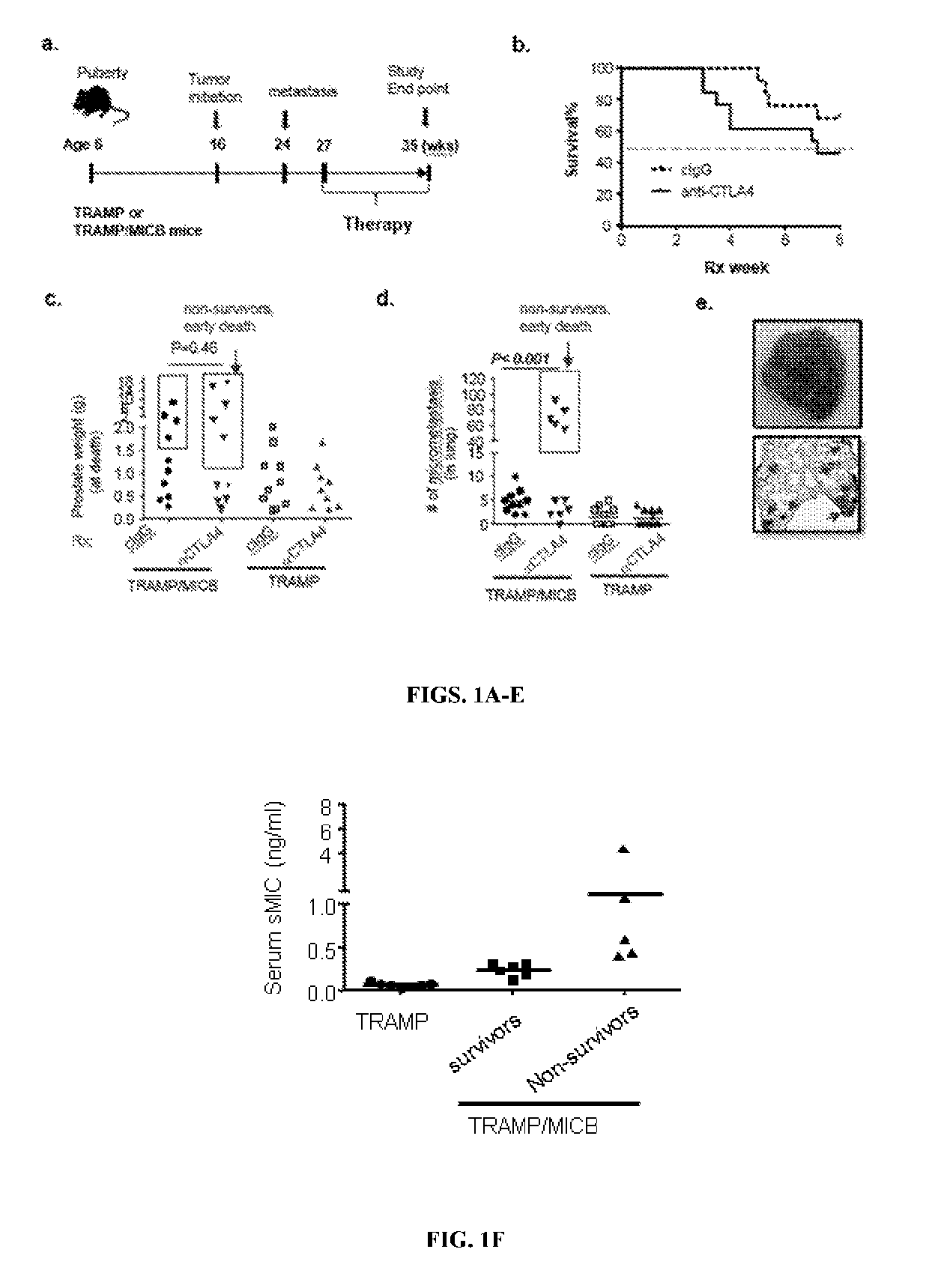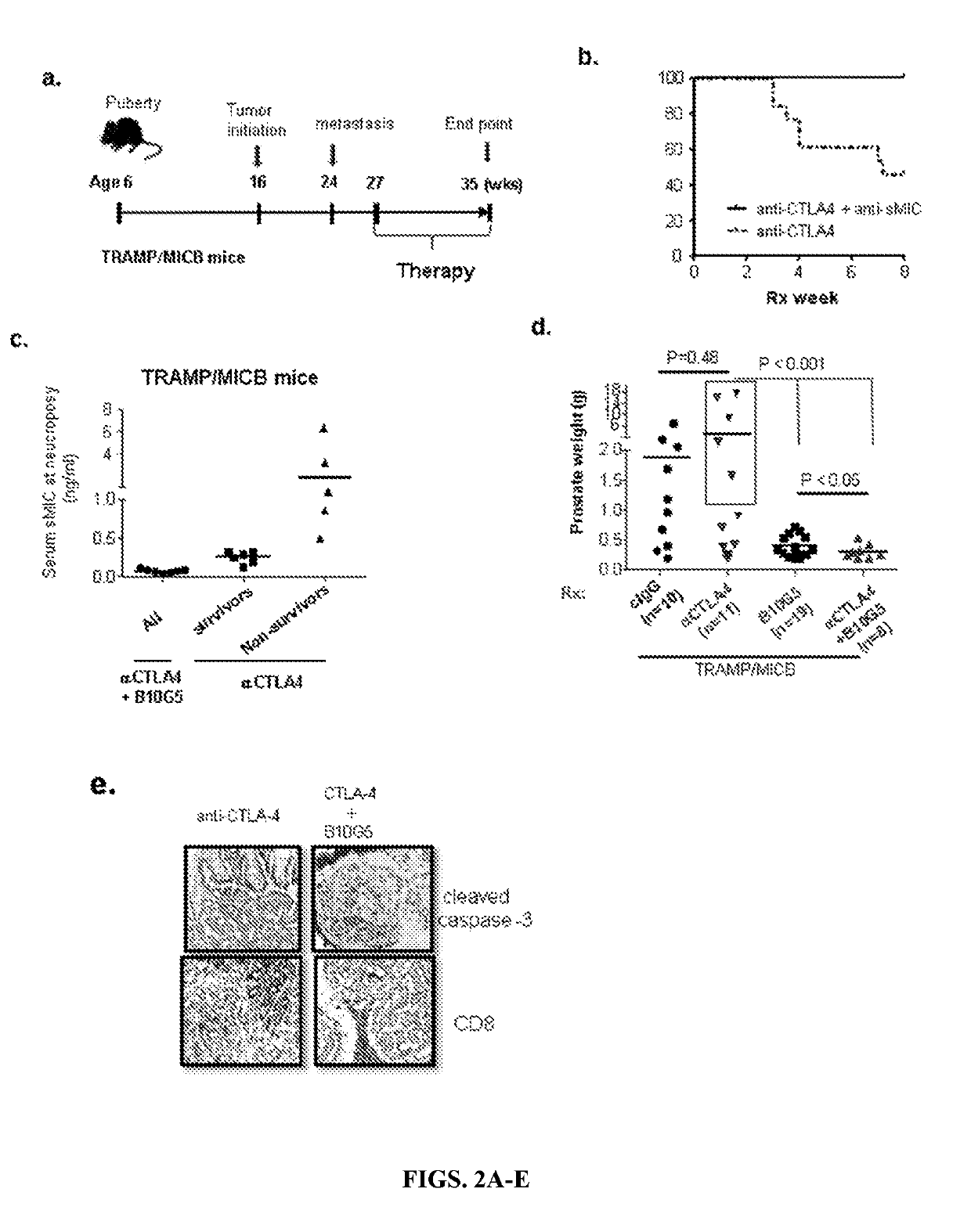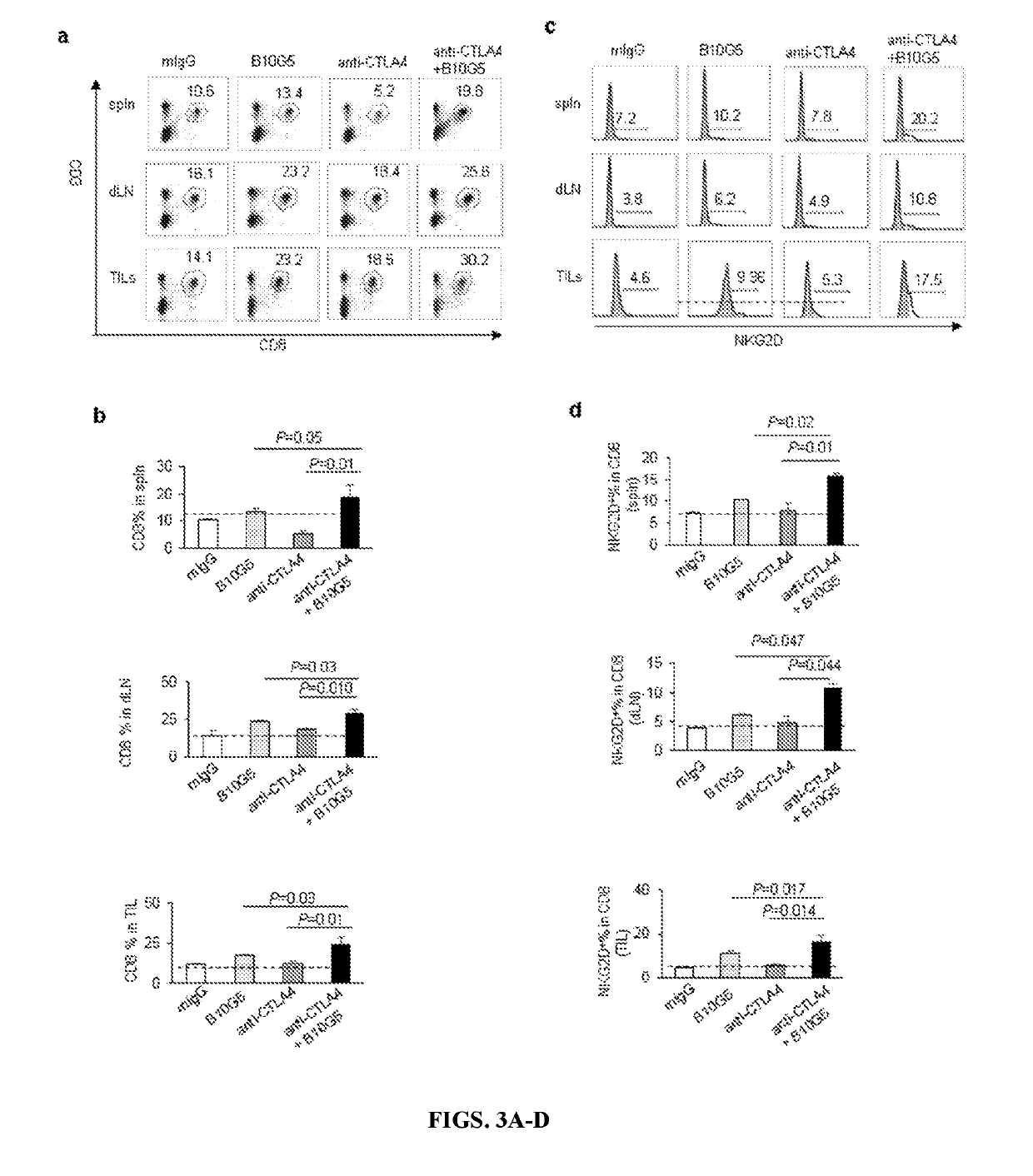Methods and compositions for the treatment of cancer combining an Anti-smic antibody and immune checkpoint inhibitors
a technology of immune checkpoint inhibitor and anti-smic antibody, which is applied in the field of medicine and immunology, can solve the problems of limited response rate, accompanied response, and significant risk of autoimmune toxicity of anti-ctla4 therapy, and achieves the effects of enhancing dendritic cell activation, enhancing tcr clonality and/or repertoire diversity, and enhancing the sustainability of t cells
- Summary
- Abstract
- Description
- Claims
- Application Information
AI Technical Summary
Benefits of technology
Problems solved by technology
Method used
Image
Examples
example 1
on of Anti-sMIC Antibody and Anti-CTLA-4
[0175]High Serum Levels of sMIC induce adverse response to anti-CTLA4 therapy: Clinical case studies have demonstrated that cancer patients who developed anti-sMIC autoantibody during the course of anti-CTLA4 therapy elicited better clinical response (Jinushi et al., 2006), which suggests that sMIC may negatively affect the response to anti-CTLA4 therapy. However, due to the facts that rodents do not express human NKG2D ligand MIC and shedding of MIC to evade immune surveillance is a clinic manifestation. Thus, the clinically relevant MIC-humanized bi-transgenic TRAMP / MIC prostate tumor mouse model was used for the current investigation (Liu et al., 2013). Akin to human malignancies, in this model, MIC and the oncogene SV4OT were concurrently expressed in male mice upon puberty. Furthermore, tumor shedding sMIC correlates with disease stages. To address the impact of sMIC on the efficacy of anti-CTLA4 therapy, cohorts of age-matched TRAMP and ...
example 2
and Methods
[0198]Antibodies and Flow Cytometry:
[0199]Single cell suspension from spleens, tumor draining lymph nodes (dLN), non-dLN, or tumor tissues were prepared as previously described (Lu et al., 2015). Combinations of the following fluorochrome-conjugated antibody were used for cell surface or intracellular staining to define populations of NK, CD8, and subsets of CD4 T cells: CD3e (clone 145-2c11), CD8a (clone 53-6.7), CD4 (clone GK1.5), NK1.1 (clone PK136), NKG2D (clone CX5), CD44 (clone eBio4B10), CD11c (clone N418), MHCII (clone M5 / 114.15.2), CD80 (clone 16-10A1), CD86 (clone P03) and CD40 (clone 1C10). For ex vivo re-stimulation, freshly isolated single cell suspension was cultured in complete RPMI 1640 medium containing 50 ng / mL PMA and 500 ng / mL Ionomycin for 6 h before being analyzed for IFNγ production by intracellular staining with an antibody specific to IFNγ (XMG1.2). Multicolored flow cytometry analyses were performed on an LSR II (BD). Data were analyzed with Flow...
PUM
| Property | Measurement | Unit |
|---|---|---|
| volume | aaaaa | aaaaa |
| volume | aaaaa | aaaaa |
| time | aaaaa | aaaaa |
Abstract
Description
Claims
Application Information
 Login to View More
Login to View More - R&D
- Intellectual Property
- Life Sciences
- Materials
- Tech Scout
- Unparalleled Data Quality
- Higher Quality Content
- 60% Fewer Hallucinations
Browse by: Latest US Patents, China's latest patents, Technical Efficacy Thesaurus, Application Domain, Technology Topic, Popular Technical Reports.
© 2025 PatSnap. All rights reserved.Legal|Privacy policy|Modern Slavery Act Transparency Statement|Sitemap|About US| Contact US: help@patsnap.com



